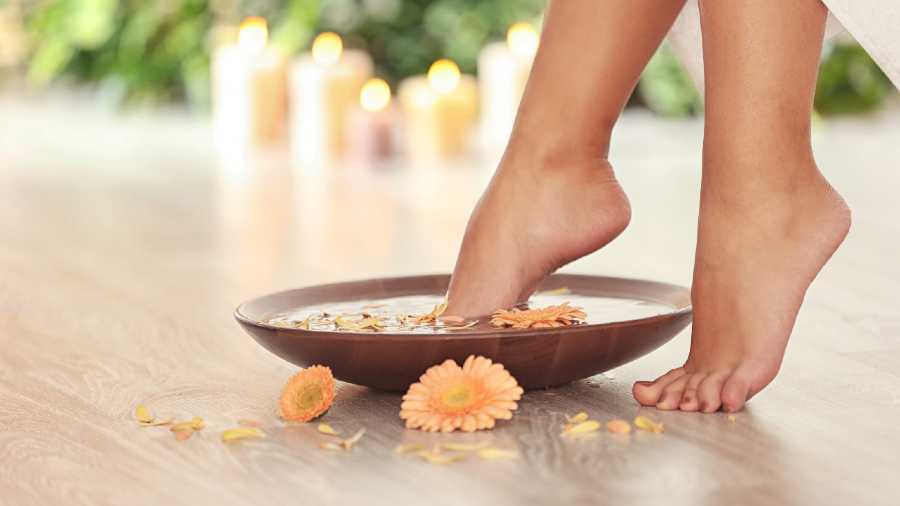Our feet bear our weight from the time we start walking; the more we weigh, the more stress and strain the feet are subjected to. Feet are efficiently constructed. They can withstand the rigours of life and activity even though each foot has more than 100 tendons, ligaments and muscles, 26 bones and 33 joints, all loosely held together and in constant motion. Any of these moving parts can become injured or displaced.
We tend to start damaging our feet inadvertently early in life. Children may be provided footwear that is too big so that their feet “grow” into them. This damages the feet since they slide back and forth while walking. Sometimes, the shoe store salesman convinces us that tight shoes will loosen and become comfortable after a few days’ use. This is far from true. As the feet are cramped in, they begin to pain. Corns and calluses develop. After prolonged use, the toes may become deformed.
High-heeled shoes are in fashion; sometimes even children wear them. Heels alter the standing posture as well as the gait. There is a change in the alignment of the hip and knees. The toes are pushed forward and cramped together. The plantar fascia situated underneath the foot becomes shortened and damaged.
In short, constant use of heels can cause plantar fasciitis and hip, knee, back and foot pain. Even worse, since balance is not perfect, it can result in falls, sprains and fractures. Children should not be given heels before they are 14-16 years, that is, till their feet stop growing.
Shoes should be purchased at the end of the day as feet tend to get slightly swollen by that time. Shoes or slippers should be tried on both feet as they may vary slightly in size. One should walk a few steps to make sure that the footwear is comfortable.
And then, there are some diseases that can make people more prone to foot problems.
Diabetes — especially if uncontrolled — reduces blood supply to the feet. It also affects the nerves. As a result, heat, cold and injuries tend to go noticed and wounds may take a long time to heal.
Gout is a metabolic disease that causes uric acid crystals to be deposited in some of the joints of the foot. Initially, it causes pain, but later on, the crystals may cause permanent damage. Medicines need to be taken to reduce uric acid levels.
Fungal infection can occur in the spaces between the toes, causing redness, itching, softening of the skin, cracks and secondary infection. Try not to keep hands and feet immersed in water, especially while washing clothes or vessels — use rubber gloves and wear slippers so that feet are elevated. Dry the feet, particularly in between the toes, after bathing. Unless care is taken, tablets and creams often have to be prescribed for months to heal these fungal infections. One of the best naturally occurring antifungal agents is henna. Regular application will turn your hands and feet orange but will keep the offending fungus at bay. Nails can also develop fungal infections. Medication and creams may have to be continued for three to six months.
If your gait is uneven and shoes do not fit properly, callouses — a build-up of hard skin — can occur over the pressure points. The feet need to be soaked regularly in warm, salted water and then rubbed with a pumice stone to remove the callouses. They should never be cut with a blade. To prevent further formation of calluses, wear insoles and supports in the footwear.
Corns are smaller and usually develop on the non-weight bearing areas. They hurt if pressed. They usually fall off if corn caps are applied. Do not ever cut them off.
The writer is a paediatrician with a family practice at Vellore and the author of Staying Healthy in Modern India. If you have any questions on health issues please write to yourhealthgm@yahoo.co.in











